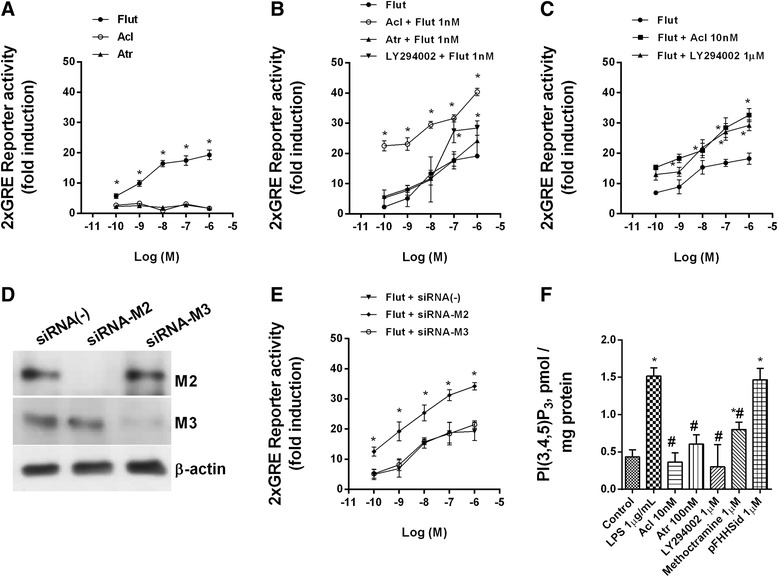Fig. 6.

Effects of aclidinium bromide on glucocorticoid response element (GRE) signal and phosphatidylinositol-3-kinase delta activation (PI3Kδ). a–d Bronchial epithelial Beas2B cells were transfected with a GRE reporter gene and stimulated with different combinations of aclidinium bromide (Acl), atropine (Atr), fluticasone propionate (Flut) and the inhibitor of PI3K LY294002. d Beas2b transfected with silencing (siRNA) negative control, and siRNA for muscarinic receptors M2 and M3 receptors were verified by western blot analysis. e Beas2b cells transfected with the GRE reporter gene and subjected to siRNA of the genes encoding muscarinic receptors M2 and M3 were stimulated with Flut. The results are expressed as the mean ± SD of three independent experiments run in triplicate. One-way ANOVA was followed by a post hoc Bonferroni test. *p < 0.05 vs. Flut monotherapy. f Peripheral blood neutrophils from COPD patients were incubated with Acl for 1 h and stimulated with lipopolysaccharide (LPS) for 30 min. PI3Kδ activity in human neutrophils from COPD patients. The results are expressed as the mean ± SD (n = 4 COPD cell populations in independent experiments run in triplicate). A two-way ANOVA was followed by a post hoc Bonferroni test. *p < 0.05 vs. control unstimulated cells; #p < 0.05 vs. LPS-stimulated cells
